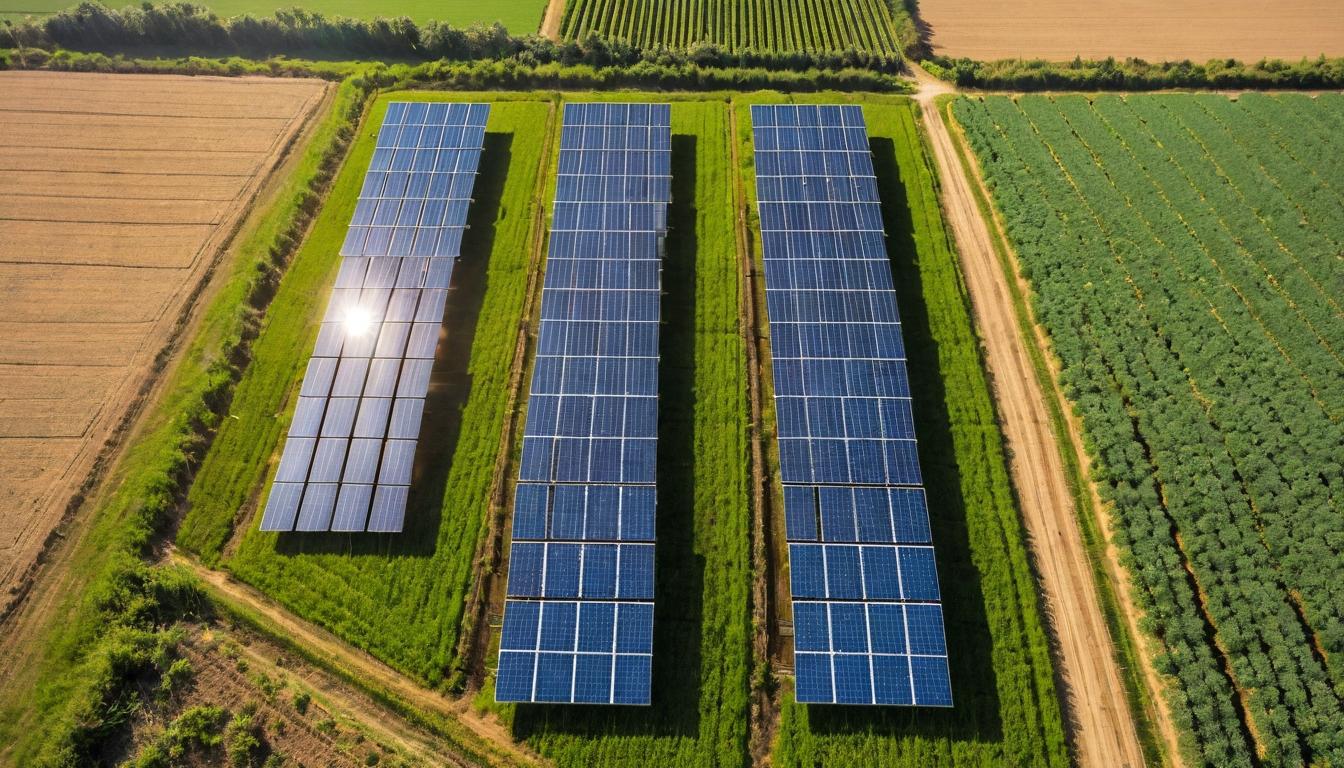The sun was setting over the cornfields of Iowa when Sarah Mitchell first saw the numbers that would change everything. Her family's farm, struggling against rising energy costs and unpredictable weather patterns, was about to become part of a quiet revolution sweeping across rural America. The solar panels glinting in the fading light weren't just generating electricity—they were generating hope.
Across the Midwest, farmers like Sarah are discovering that the same sun that grows their crops can also power their operations and put money back in their pockets. It's a transformation happening not in Silicon Valley boardrooms or government offices, but in barns and fields where practicality trumps ideology every time.
The economics have become impossible to ignore. While solar installations in urban areas often face regulatory hurdles and space constraints, rural properties offer vast expanses of unused land perfect for harnessing the sun's energy. The math is straightforward: a typical agricultural solar installation can pay for itself in 5-7 years while providing free electricity for decades afterward.
But this isn't just about saving money. It's about resilience. When severe weather knocks out power lines—an increasingly common occurrence—farms with solar and storage systems can keep operating independently. For dairy farmers who need to milk cows around the clock or poultry farmers who require constant climate control, this energy independence isn't a luxury—it's survival.
The technology behind this rural solar boom has evolved dramatically. Bifacial panels that capture light from both sides, tracking systems that follow the sun across the sky, and sophisticated battery storage solutions have made solar more efficient and reliable than ever before. These aren't the clunky, inefficient panels of a decade ago—they're sleek, intelligent systems that integrate seamlessly with modern farming operations.
What's particularly fascinating is how solar is complementing rather than competing with agriculture. Agrivoltaics—the practice of combining solar energy production with crop cultivation—is showing remarkable results. Certain crops actually thrive in the partial shade provided by solar arrays, requiring less water while maintaining yield quality. Sheep graze contentedly beneath elevated panels, keeping vegetation under control while producing wool and meat.
The financial models have evolved too. Instead of massive upfront investments, farmers can now choose from power purchase agreements where third parties install and maintain the systems while the farmer simply buys the electricity at reduced rates. Community solar projects allow multiple farms to share the benefits of a single large installation, spreading costs and risks while maximizing efficiency.
This rural solar movement is creating unexpected economic opportunities beyond the farm gate. Local installers and maintenance companies are springing up in small towns, providing skilled jobs that can't be outsourced. Technical colleges are developing solar training programs, creating career paths for young people who might otherwise leave their communities.
The environmental benefits extend far beyond reduced carbon emissions. By generating clean energy locally, rural solar reduces strain on aging transmission infrastructure and minimizes energy losses that occur when electricity travels long distances. It's making the entire grid more resilient and efficient—benefits that flow to urban areas as well.
Despite these advantages, challenges remain. Access to capital, regulatory complexity, and misinformation about solar's reliability still create barriers for some farmers. Educational programs and supportive policies are crucial to ensuring that this transformation reaches all who could benefit.
The story unfolding in America's heartland isn't just about technology or economics—it's about reinvention. It's about taking the oldest energy source available to humanity and pairing it with the newest innovations to create something truly transformative. As Sarah Mitchell watches the meters spin backward on her farm, she's not just seeing kilowatt-hours—she's seeing a brighter future for her family and her community.
This quiet revolution proves that sometimes the most profound changes come not from top-down mandates, but from bottom-up innovation driven by practical people solving real problems. The sun, it turns out, doesn't just grow crops—it grows possibilities.
The hidden revolution: how solar energy is quietly transforming America's heartland




